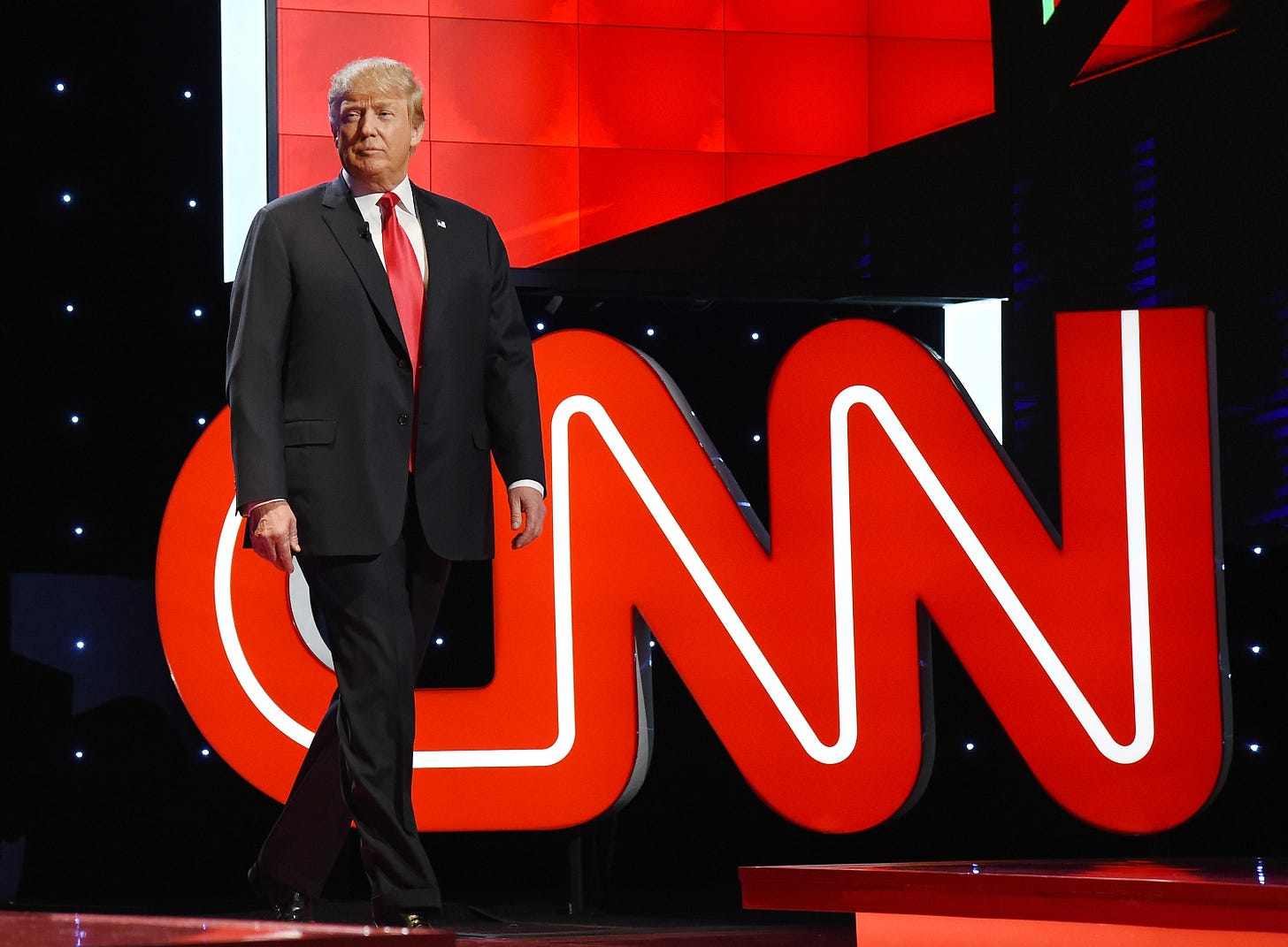Tonight on the livestream I’m going to talk with Will Saletan and Adam Keiper about the CNN town hall, the E. Jean Carroll verdict, and Will’s Lindsey Graham opus.
But it’s at a special time: 9pm in the East.
Only for members of Bulwark+.
1. How to Do Journalism
There are a lot of people who have made a lot of money in recent years shouting about the bIAsEd mEDiA. They are worried about media “narratives” and Twitter “censorship.” What these people—the Andrew Sullivans and Matt Taibbis and Glenn Greenwalds and Bari Weisses of the world—never seem to worry about is the structural problem that Trump 2024 presents to the media.
Here is how I summed it up three years ago:
We are on the cusp of a media crisis that no one is talking about.
As we move toward 2024, the big concern should be how the media would cover an openly anti-democratic presidential candidate. Would they treat said candidate as a danger to America? Or would they attempt to remain neutral and pretend that he was just another generic politician doing normal political things?
If this scenario comes to pass, that would be something entirely new in media.
And it’s not clear to me that anyone is really gaming this problem out yet.
The CNN town hall with Trump was a reminder of why we sell the t-shirt.
Coming up with rules for how to cover an openly anti-democratic presidential candidate isn’t hard.
First, you break the media into buckets for broadcast and print.
Broadcast: Don’t Do It Live
Never give Trump access to live air where he can filibuster and lie without adequate accountability.
When presenting Trump through recorded clips, aggressively fact check him in post-production, preferably with video sourcing.1
Do not edit out his wilder statements and create a sanitized version of Trump for broadcast. Present his craziest stuff to the audience and contextualize it.2



